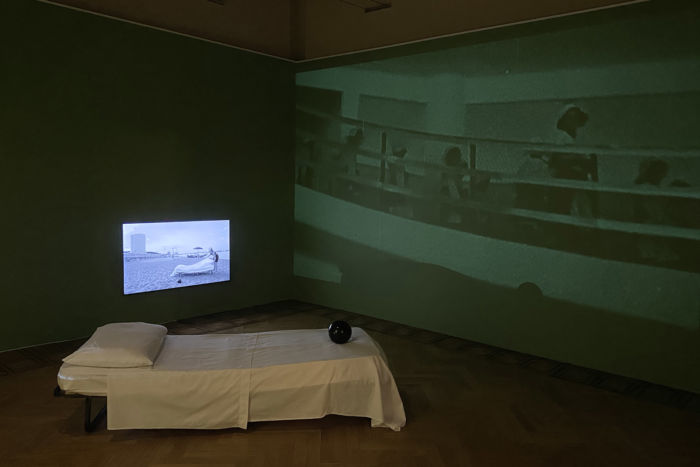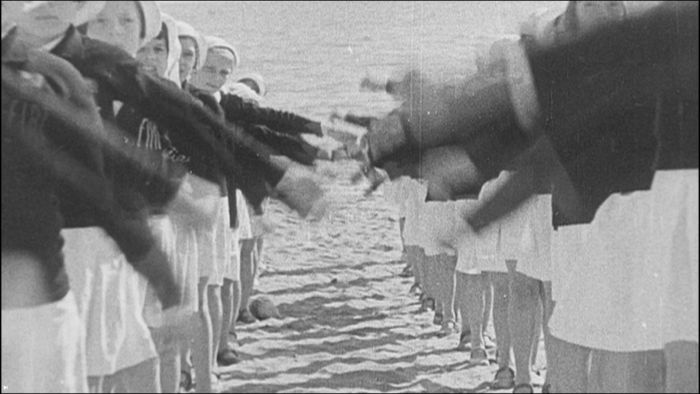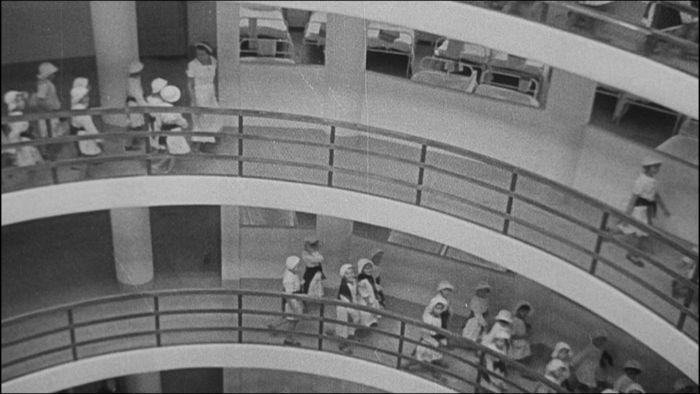Eleonora Roaro | “Estate 1936”
Single-channel video | 33’26” (loop)
1920×1080 HD 16:9 | Silent
Edition 3 + AP | 2022
Giornale Luce nr. B0940 Agosto 1936
Single-channel video | 01’41” (loop)
1920×1080 HD 16:9 | Silent
Courtesy Cinecittà S.p.A.
Eleonora Roaro | “Estate 1936”
Eight vintage postcards | 2022
“Estate 1936” [“Summer 1936”] investigates the legacy of seaside colonies for children during fascism, starting with the case of the former Balilla Tower in Marina di Massa. Designed by architect Vittorio Bonadé Bottino on the initiative of Edoardo Agnelli for FIAT employees and inaugurated in 1933, the 52-metre tower could accommodate up to 800 children.
An Istituto Luce film from 1936, edited by the artist, shows the rigid routine and ‘unusual discipline’ (Casabella no. 167, 1941, p. 2) that characterised the summer colonies, which were actually designed to support the Fascist consensus: this was not true free time in which to play, but rather a series of organised activities in which order, rhythm, and collective movement were predominant.
In a performance realised by the artist, some actions inspired by the rules of the colonies are repeated, highlighting alienation and indoctrination. Black and white postcards, a fascist poster, and a floor plan emphasise the iconography of the Balilla Tower, underlining the rigour of modernist architecture – rigour that is reflected in the actions of the children who lived in those places, and whose memory has often been erased.







